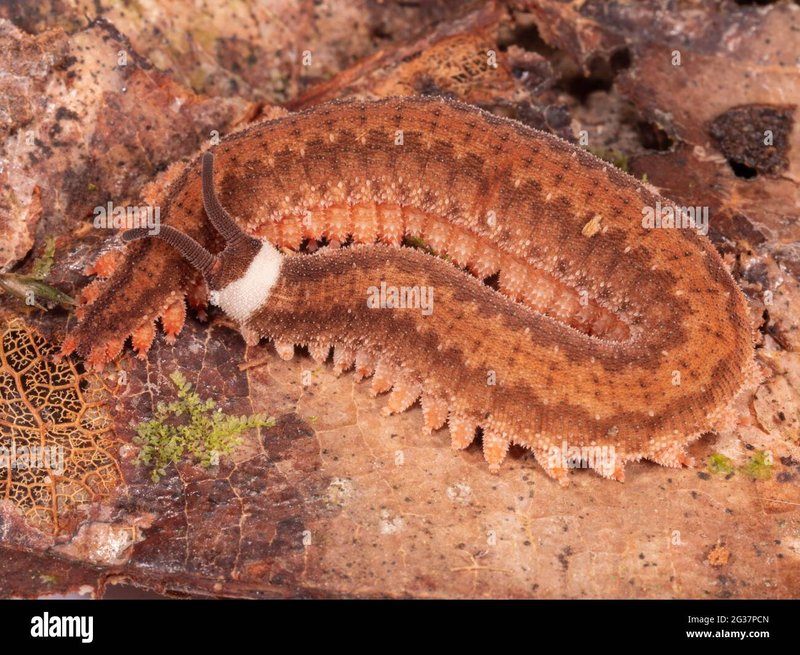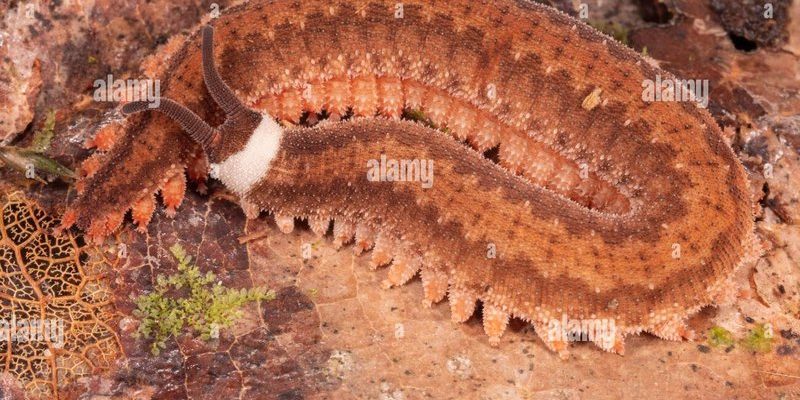
Velvet worms, or *Onychophora*, are neither insects nor worms but fall somewhere in between, making them peculiar yet vital players in forest food webs. Picture a small, soft-bodied creature that glides gracefully through the leaf litter, equipped with an arsenal of slime and specialized predatory skills. Learning about their functions helps us appreciate how interconnected all life is, no matter how small or seemingly insignificant.
What Are Velvet Worms?
Let’s dive deeper into what velvet worms actually are. These fascinating creatures inhabit moist, tropical forests, often hiding under leaves, logs, or stones. They can range from a few centimeters to over 20 centimeters in length. One of their most remarkable features is their soft bodies, which are covered in a velvety texture—hence their name.
You might be wondering, “What sets them apart from other worms?” Well, velvet worms possess a unique set of adaptations. They have a pair of antennae, multiple pairs of legs, and a mouth equipped with fang-like appendages that can inject a paralyzing slime into their prey. This slime, filled with enzymes, helps break down the body of their unlucky victims, usually small insects or other invertebrates.
These slime-slingers have been around for millions of years, tracing their lineage back to the time of the dinosaurs! Think about it—these creatures are like living fossils, offering scientists insights into evolutionary history. Understanding their biology is crucial, as they are a vital part of their habitats.
Velvet Worms in the Food Web
Now, let’s talk about how velvet worms fit into the overall forest food web. You can think of the food web as a giant puzzle, with each species acting as a piece that holds everything together. Velvet worms are often categorized as both predators and prey.
As predators, they primarily feast on smaller invertebrates like ants, spiders, and even small centipedes. Using their remarkable slime, they ensnare their prey, rendering them helpless before consumption. This predatory behavior helps control the populations of these smaller creatures, preventing any one species from becoming too dominant.
On the flip side, velvet worms also serve as food for larger animals. Birds, lizards, and mammals are known to munch on these delectable morsels. This means that velvet worms play a dual role: they keep smaller populations in check while also providing sustenance for those higher up the food chain, contributing to biodiversity.
The Importance of Biodiversity
Biodiversity is a big word that gets tossed around a lot, but what does it really mean? In simple terms, it refers to the variety of life in a particular ecosystem. Velvet worms contribute to this diversification, making forests healthier and more resilient.
Healthy ecosystems, like those where velvet worms thrive, provide many benefits. They help filter water, improve soil quality, and support an array of plant and animal life. By being part of the food web, these little guys help maintain balance within their environments. The loss of even one small species can have a ripple effect that throws the entire system off-kilter.
Imagine if all the velvet worms vanished overnight. The populations of their prey could explode, leading to overgrazing of plants and resulting in ecosystem imbalances. That’s a dramatic change in the forest landscape! This interconnectedness illustrates how every creature, no matter how small, plays a critical part in the health of our planet.
Habitat and Conservation
Understanding where velvet worms live helps us grasp their environmental significance. These creatures prefer humid, tropical forests marked by lots of leaf litter, where they can hide from predators and stay moist. Unfortunately, many of these habitats are under threat from deforestation and climate change.
As forests are cut down or altered, velvet worms lose their homes. This loss not only affects the worms themselves but also the entire community of life that depends on them. Conservation efforts aimed at protecting these habitats are crucial for ensuring that velvet worms and their ecosystems can survive.
For example, some regions are already implementing measures to reduce deforestation and promote sustainable practices. Supporting local conservation efforts, such as eco-tourism and wildlife preservation programs, can help provide the necessary funds and awareness to keep these important habitats intact.
Fun Facts About Velvet Worms
Let’s wrap it up with some fun facts to showcase how cool velvet worms truly are!
- Ancient Species: They’ve existed for over 500 million years—outliving the dinosaurs!
- Unique Defense Mechanism: When threatened, they can expel a thick, sticky slime to deter predators.
- Slow Movers: Velvet worms aren’t in a hurry; they move at a leisurely pace, crawling along the forest floor.
- Not Actual Worms: Despite their name, they’re more closely related to arthropods like insects and spiders.
These little creatures might not be household names, but they add incredible value to forest ecosystems.
The Future of Velvet Worms in Ecosystems
So, what does the future hold for velvet worms? As we face global environmental changes, the fate of these fascinating creatures hangs in the balance. The good news is that by understanding their role in forest food webs, we can advocate for their protection.
Educating ourselves and others about velvet worms can lead to greater appreciation and drive conservation efforts. We can also support policies that protect natural habitats, ensuring that velvet worms, along with countless other species, continue to thrive in our forests.
In conclusion, velvet worms may be small and easily overlooked, but they carry out essential functions in the ecosystems they inhabit. By keeping nature’s balance intact, they help ensure our forests remain rich and diverse. So next time you think about forest life, remember these tiny but mighty creatures and the significant role they play in the food web.

